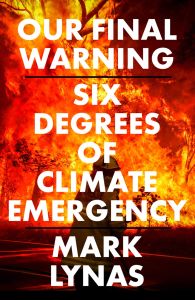Join getAbstract to access the summary!

Join getAbstract to access the summary!
Mark Lynas
Our Final Warning
Six Degrees of Climate Emergency
Fourth Estate, 2020
What's inside?
One more degree of global warming will devastate ecosystems. Six degrees may trigger a mass extinction.
Recommendation
The world’s mean temperature is now 1°C [1.8 °F] warmer than it was before the Industrial Revolution. That may not sound like much, but the rise has triggered unprecedented droughts, wildfires, the melting of glaciers and Arctic sea ice, and the decimation of coral reefs. Science journalist Mark Lynas outlines the degree-by-degree consequences of a continued warming, from the crop failures and food shortages of a 2°C [3.6 °F] rise to the mass extinctions at 6°C [10.8 °F].
Summary
About the Author
Journalist Mark Lynas is visiting fellow with the Alliance for Science at Cornell University. He has written for The New York Times, The Washington Post, The Times and The Guardian.

















Comment on this summary